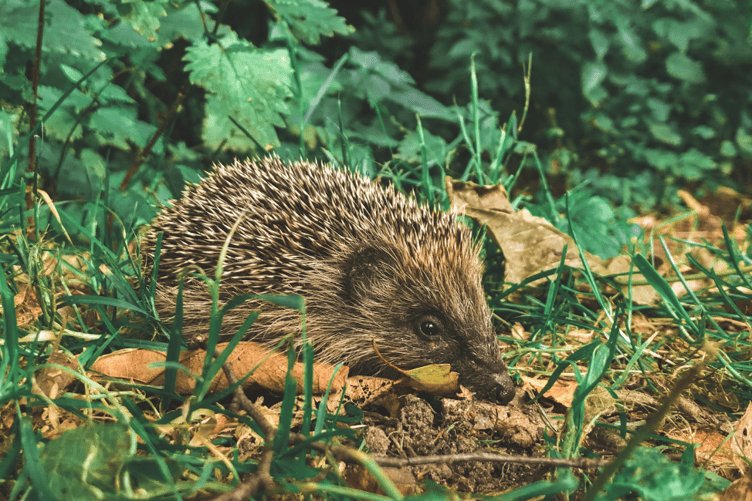It’s hedgehog awareness week between May 4 and 10, which is an excellent opportunity to remind us all about the things we can do to help Britain’s favourite mammal.
This year the British Hedgehog Preservation Society (BHPS) is asking people to ‘Give hedgehogs the edge’ by making the green edges of their gardens and green spaces havens for wildlife, and encouraging landowners such as schools and sports clubs to do the same.
The BHPS suggests that we can all do the following:
- As well as letting the edges of green spaces go wild, create log piles and leaf mounds which offer shelter to hedgehogs; and always check carefully for wildlife before strimming.
- Add ‘hedgehog highways’ to your garden fences by making several 13cm by 13cm holes in the base of them, which will allow hedgehogs to move more freely in pursuit of food.
- Make ponds safe by adding escape routes to them – create sloping edges, place a piece of timber in the water as a ramp, or pile half-submerged rocks onto each other so that a thirsty hedgehog that falls in can climb out.
- Cover the entrances to drains so that a hedgehog doesn’t fall in and then be unable to climb back up.
- Don’t use slug pellets or pesticides, and instead go for safer alternatives such as sprinkling crushed eggshells or coffee grounds around any vulnerable plants; and spraying soapy water on delicate flower buds.
- When using garden mesh, try to place it several inches above the ground to prevent a hedgehog becoming tangled in it.
- Don’t set light to garden fires without moving the contents of the fire to a new spot first, just in case a hedgehog has fallen asleep underneath the twigs and leaves.
- And, of course, make sure there are always clean shallow bowls of water available for hedgehogs to drink from – add a few pebbles for bees and butterflies to perch on so that they can drink safely too.
The majority of hedgehogs wake up during April having been in hibernation since October.
Their first priority is to replace the weight they have lost, and some will be in a very poor condition.
The easier it is for them to access food, the less they will need to travel and potentially cross busy roads, and so this is a perfect time of year to supplement their natural diet.
Create a hedgehog feeding station using both wet and dry dog and cat food (but not the fish variety), white meat, nuts and raisins and some hedgehog experts recommend scrambled or chopped up eggs as a particular favourite.
Sadly, we have had four juvenile hedgehogs brought to us in the past week, all from separate locations, and all seemingly uninjured.
They must have been from late litters last autumn, and did well to survive the winter because none of them was heavy enough to have stored enough fat reserves.
We think they must have woken up from hibernation slightly early given we had such a dry, mild March, and then succumbed to a wet, cold April.
None of the hedgehogs survived, despite being given emergency care – their internal organs had already started to shut down.
Back to what we can all do to help hedgehogs: even if you don’t have a garden you can do your bit by picking up litter which can endanger wildlife if it’s ingested, or trap mammals that become stuck in it.
And whenever you walk past a cattle grid, check to see if a hedgehog is trapped underneath it (and contact the landowner, or the ManxSPCA, if this is the case).
The BHPS recommends that landowners place ramps inside their cattle grids to provide an escape route for any mammal that gets stuck.
And please remember, if you come across a hedgehog that is clearly injured you will need to take it straight to a vet who will treat it free of charge.




.jpeg?width=209&height=140&crop=209:145,smart&quality=75)